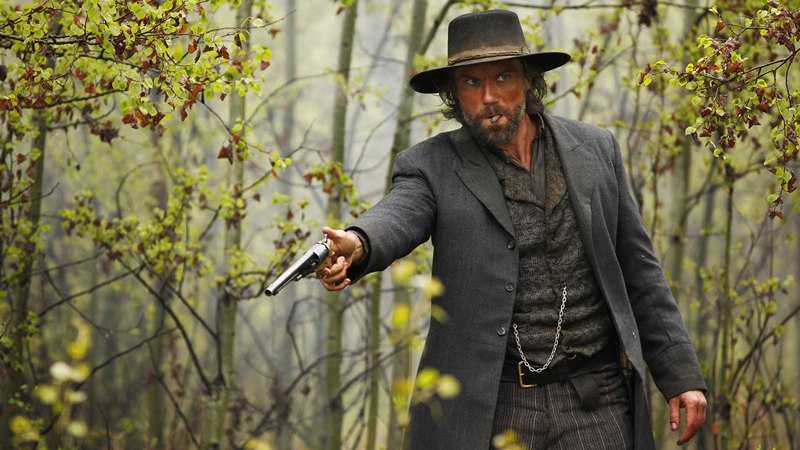Among the opportunities film on DVD has afforded me personally has been the chance to revisit some of the favorite sci-fi fantasy films of my youth, many of which I have already reviewed for this site, like “The War of the Worlds,” “Jason and the Argonauts,” and “The 7th Voyage of Sinbad.” To a young imagination, however, one of the true classics was George Pal’s production of H.G. Wells’ “The Time Machine.” By today’s standards parts of the movie now look pretty cheesy, but not since that Saturday matinee in 1960 when I first saw it in a motion picture theater have I seen its picture and sound look so good as they do on disc. “The Time Machine” may not hold up to close scrutiny, but it’s always good to welcome back an old friend, timeworn or not.
As far as the story goes, the filmmakers managed to mislay most of Mr. Wells’ eloquent language and philosophical questions in favor of a simplified “Classics Illustrated” approach. Rod Taylor (“The Birds,” “Do Not Disturb”) stars as H.G. Wells himself, only he’s not a writer in the story, he’s an inventor. Australian-born but thoroughly Americanized Taylor does his best to effect an English accent, but, regrettably, it comes and goes. The year is just before the turn of the twentieth century, and Wells has contrived his famous “time machine.” In fact, the machine itself is the best part of the picture, all ornate mahogany, brass, velvet, and crystal, looking very much the Victorian artifact it’s supposed to be. Taylor uses it to propel himself through two World Wars, a nuclear holocaust, and on to the year 802701.
There he discovers that civilization has degenerated into two classes of people–the Eloi, beautiful, young, and passive, and the Morlocks, ugly and destructive. The Eloi live above ground in a virtual paradise, but they have no culture, do no work, and have practically no minds; they are mere vegetables. The troglodyte Morlocks live underground and feed off the Eloi. In fact, they breed the Eloi as food, much as we breed cattle and sheep, taking them down to their subterranean caverns to butcher and eat them. Needless to say, this societal split gives the story some small room for moralizing and some room for Taylor to heroically show the Eloi a better way of living. Yeah, like not dying. Besides Taylor, the cast includes Alan Young as the hero’s best friend, Yvette Mimeux as the hero’s Eloi love interest, and Sebastian Cabot as a doctor who scoffs at the idea of time travel.
I appreciate that screenwriter David Duncan and director George Pal chose to keep the initial time frame in Wells’ own day, 1899, as well as keep the place setting, England, rather than try to modernize the story or put it somewhere else. The film version of Wells’ “The War of the World,” for instance, made a few years earlier, was updated to the early 1950s and relocated to America for no particular reason. “The Time Machine” remains more true to Wells’ intentions and retains its period charm. However, I could have done without some of the filmmakers’ plot changes, especially the nuclear war they placed in 1966. Maybe before video tape and DVDs filmmakers thought less about the longevity of their products, in this case figuring that at the height of the Cold War in 1960 it would be a good topical touch to show a devastating holocaust just a few years in the future. Wrong. Viewed today it just seems silly. I mean, the filmmakers had thousands of years to play with, yet they chose 1966 to destroy the world; obviously, they didn’t figure audiences might still be watching their movie forty years on. To be fair, though, filmmakers do this kind of thing all the time, even when they should know better. James Cameron prematurely blew up the world in the “Terminator” series, and it makes me flinch every time I watch those scenes.
Other picky faults stand out today in “The Time Machine” that I hadn’t noticed as a kid. The several fight scenes between Taylor and the Morlocks are badly choreographed, Taylor’s punches clearly missing their targets by a foot or more while the soundtrack supplies some feeble contact noise. Cheap, five-and-dime-store toy cars are used in a scene where lava envelops a city street. Exceptionally phony miniatures attempt to replicate the Morlock’s underground empire being destroyed. A Morlock set afire is plainly seen wearing a blazing sweater that is supposed to be his skin. OK, admittedly these criticisms were products of the film’s budget constraints; what I always thought of as a lavish production turns out on closer inspection to be a low-budget affair, the whole project coming in, according to the accompanying documentary, at about $750,000. Nowadays you couldn’t hire a leading actor for that money.
There’s little excuse for the detail oversights, though. For example, where do the Eloi, who do no work, get their perfectly fitting clothes? Surely not from the Morlocks, who don’t even appear capable of clothing themselves properly. And how do the Eloi women manage such meticulous hair styles, and who supplies their makeup and their false eyelashes? And how do the men shave or cut their hair without knives, razors, or electricity? And, worst of all, how can we be expected to believe that the English language would remain unchanged for over three-quarters of a million years? Most of us can’t even understand what our kids are saying today. But, as usual, I harp on trivialities. This is a comic-book adventure with comic-book sensibilities.
Video:
The picture is offered in a 1.74:1 ratio presentation, enhanced for widescreen televisions. The colors are bright, vivid, and alive, with little color bleed-through. In the climactic scenes in the Morlock underground, the hues tend to fade somewhat in the dark, but overall it’s a far better print than one might expect.
Audio:
The sound, too, is good for its age. It’s a true two-channel stereo, although a little bright, somewhat narrow in left-to-right front-channel spread, and quite limited in what gets artificially diverted to the rear channels.
Extras:
Of the disc’s special features, a forty-eight-minute, indexed documentary, “The Journey Back,” stands out. It was made in 1993, thirty-three years after the film’s release, and it’s hosted by star Rod Taylor. He reminisces, gives us behind-the-scenes glimpses of the filmmaking, and, most important, tells us everything we ever wanted to know about the building and history of the contraption used for the time machine in the movie. Then, to conclude the documentary, Taylor gets together with his old costar, Alan Young, to enact a sort of sequel to the story, bringing Wells back from the future and reuniting him with his friend. It’s a touching sequence. The disc also includes cast and crew biographies and filmographies, twenty-nine scene selections, and a widescreen theatrical trailer. English and French are provided for spoken languages, English and French for subtitles.
Parting Shots:
I hadn’t seen “The Time Machine” in quite a long while, and I’m sorry it didn’t hold up as well as I had hoped. Nonetheless, it’s more fun than a lot of what passes for entertainment these days. The story gets bogged down in the whole Eloi-Morlock business, but it builds some genuine momentum getting there. It remains good second-tier sci-fi.


